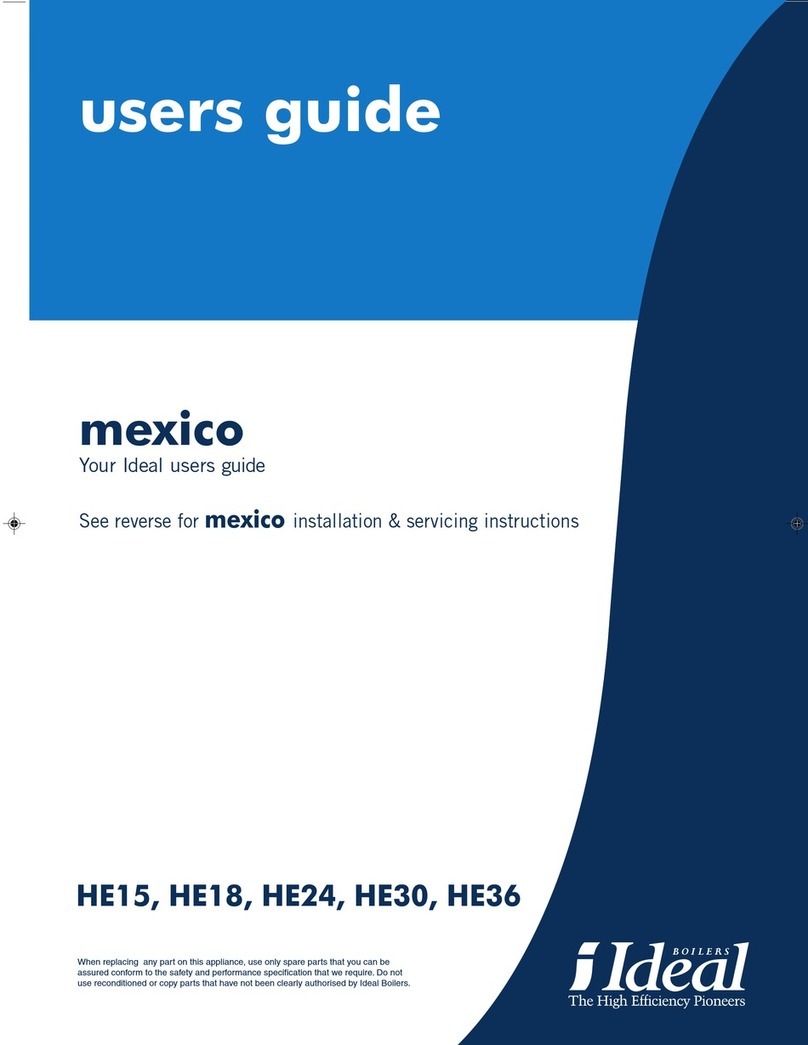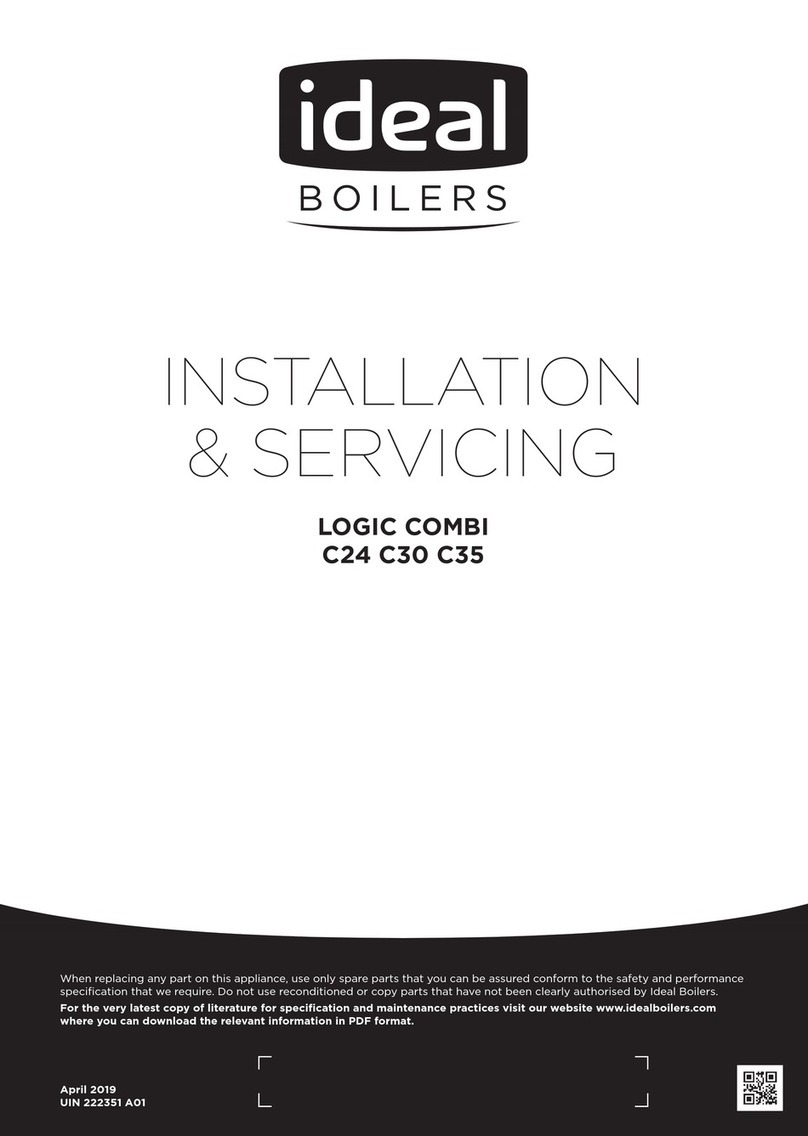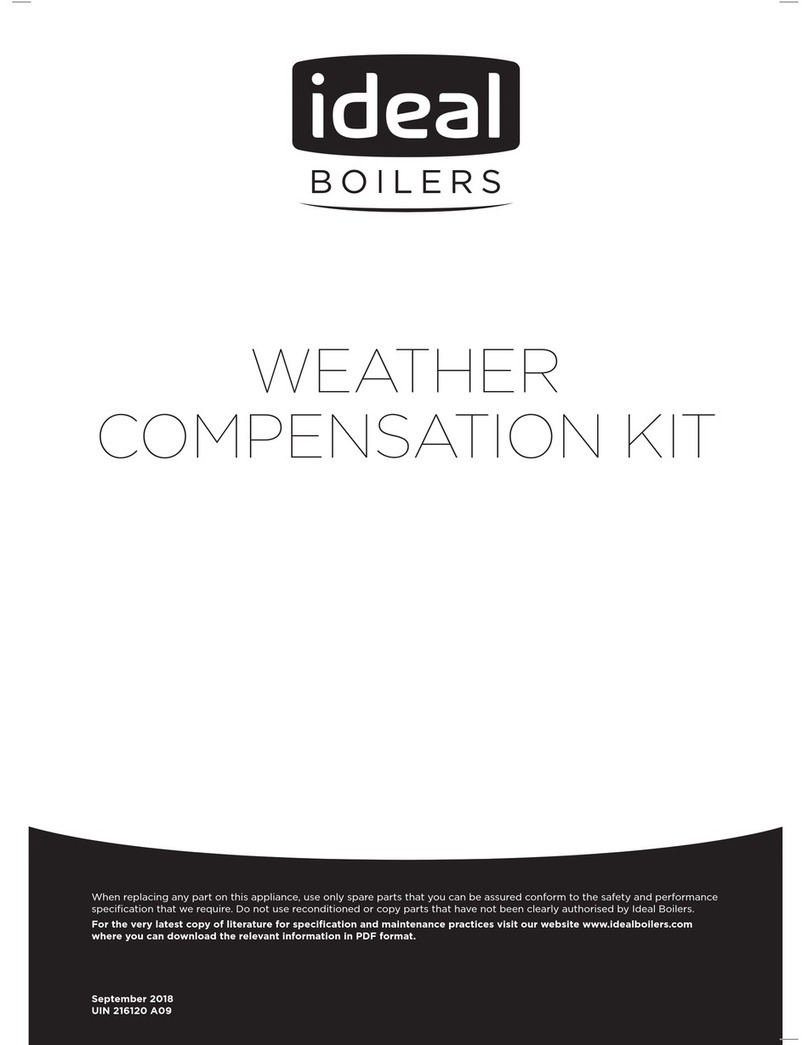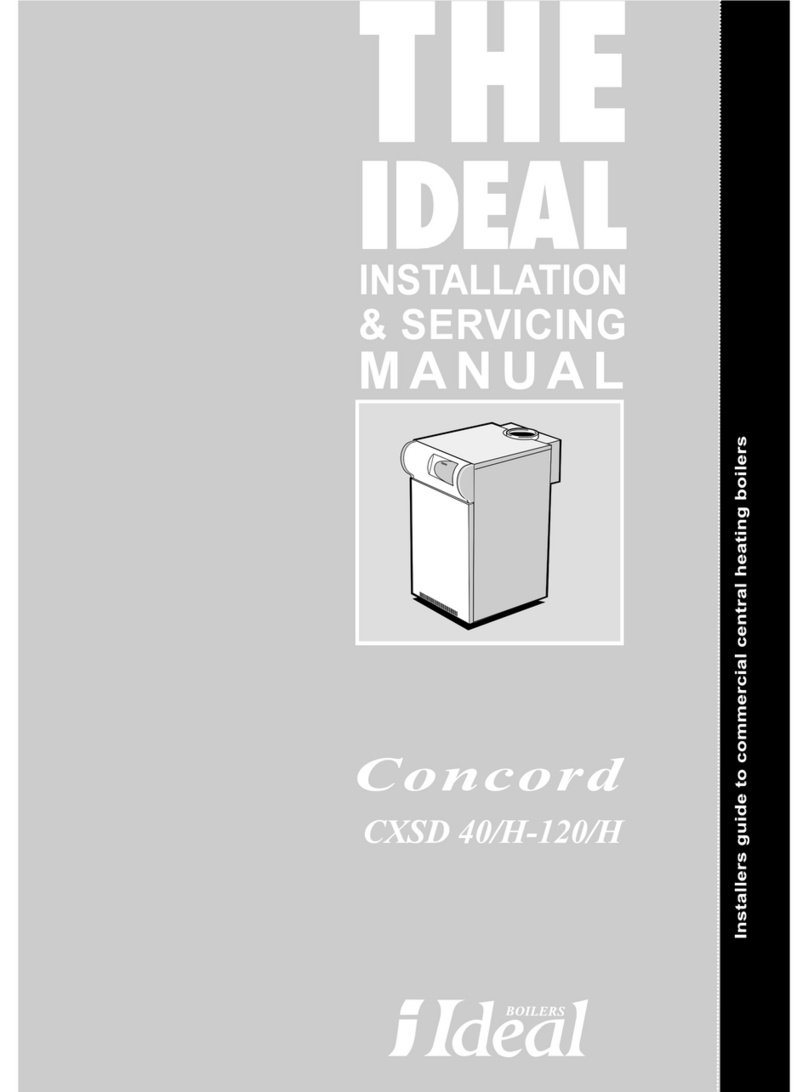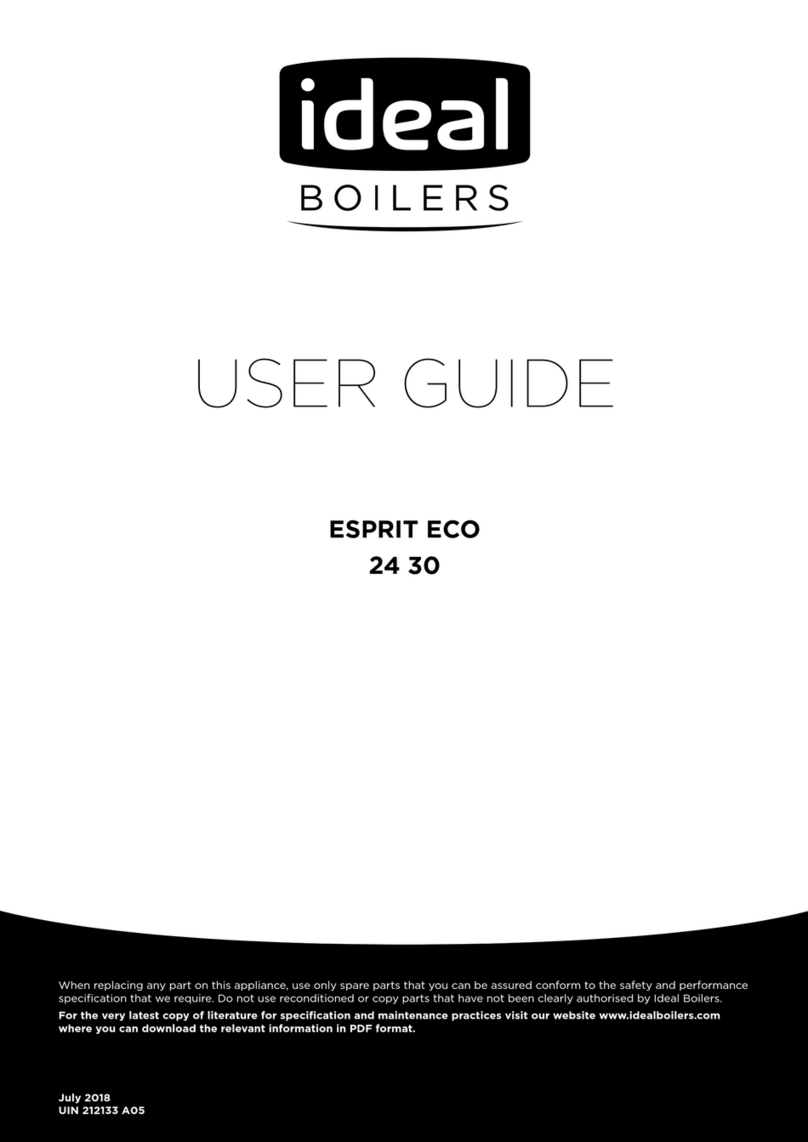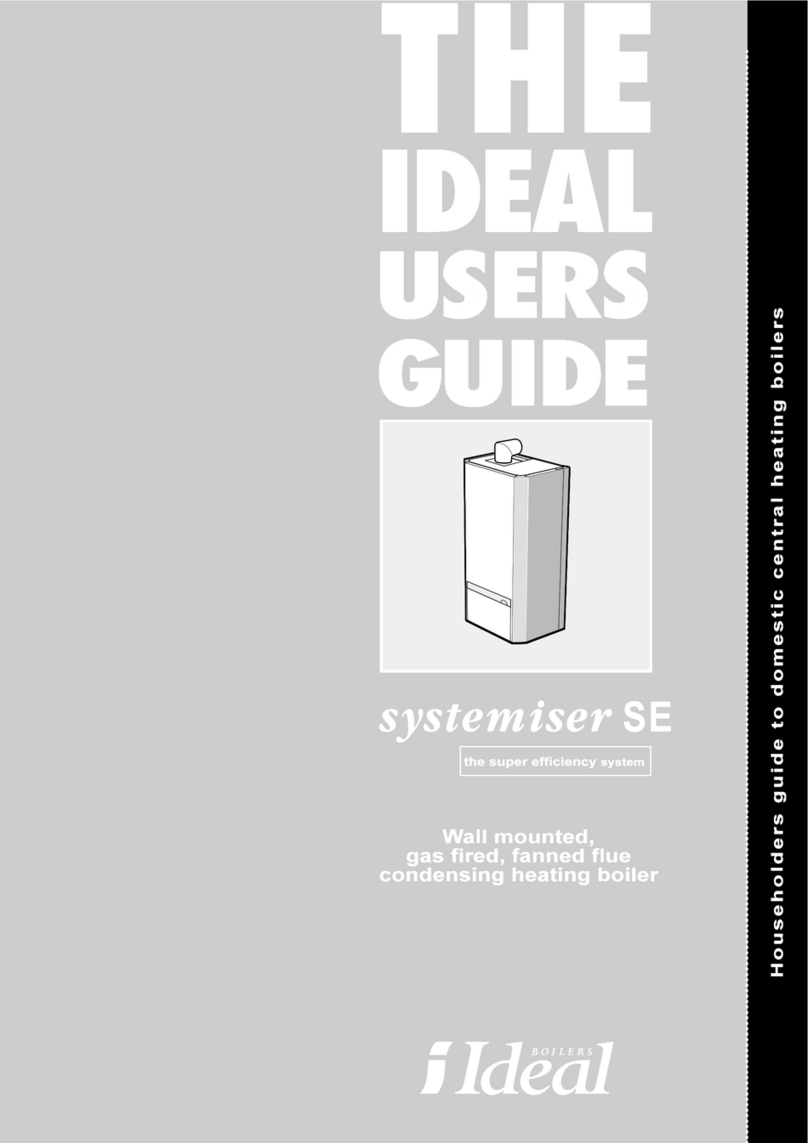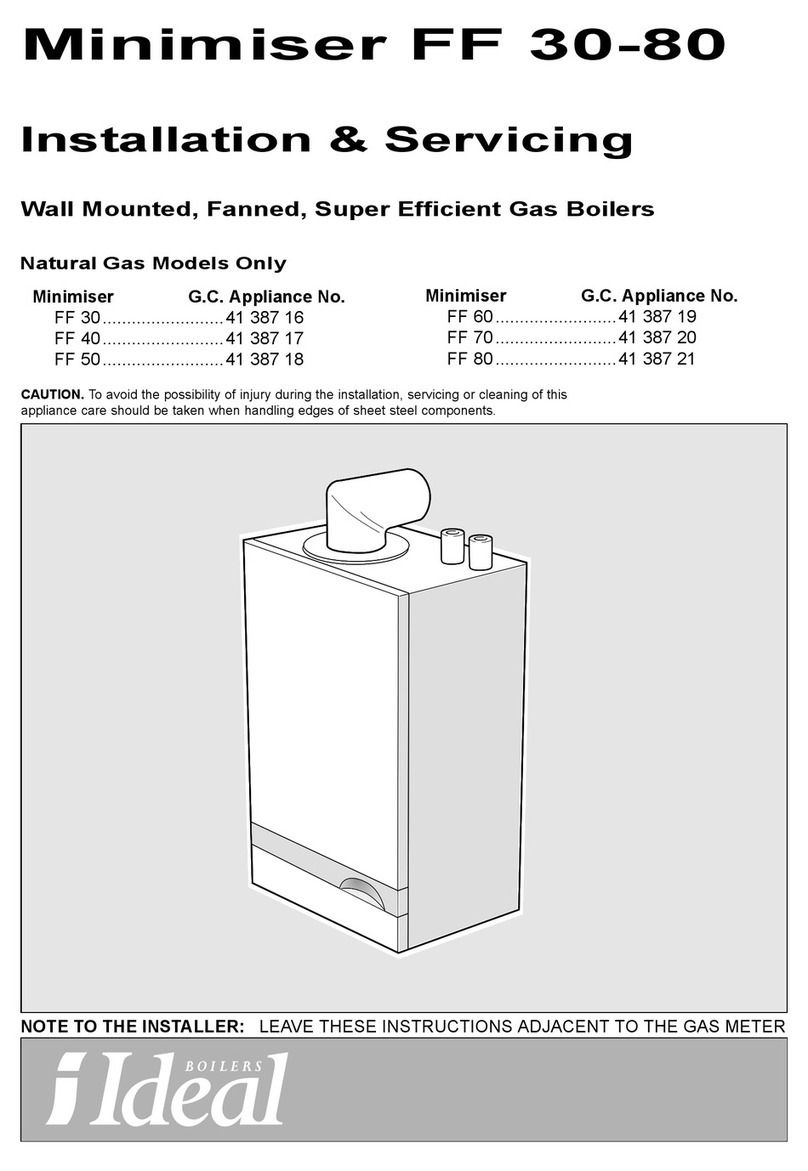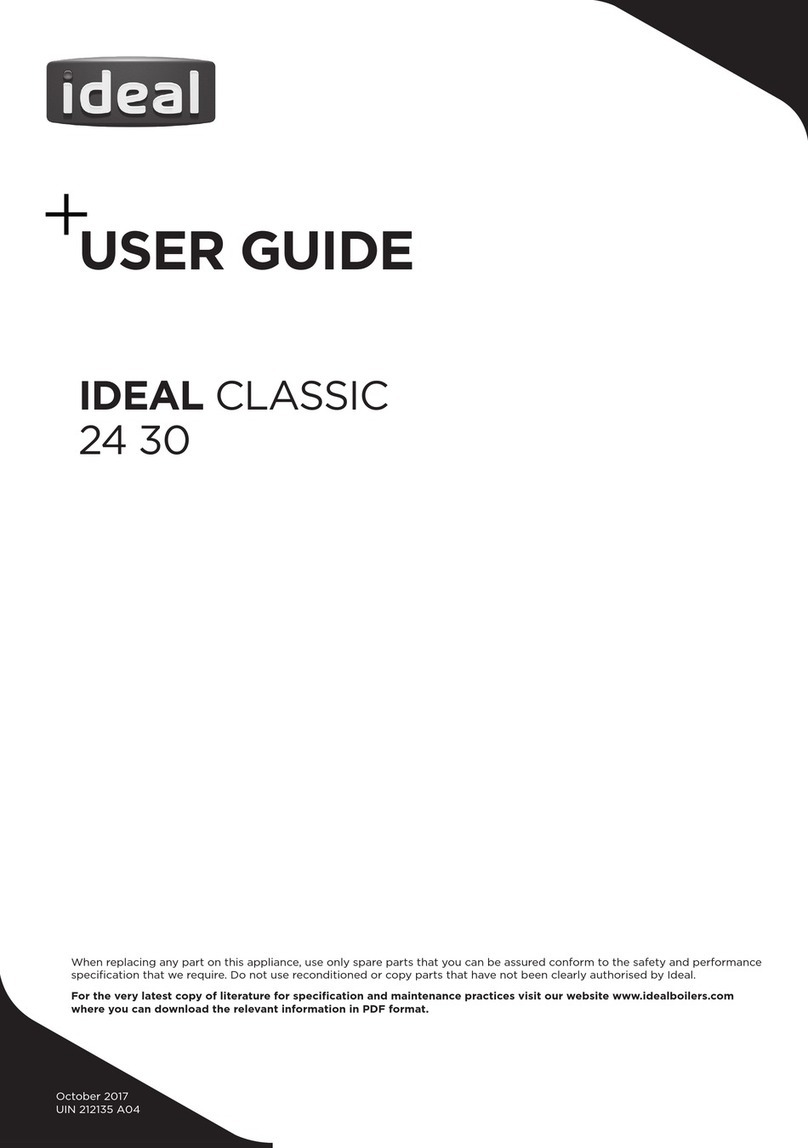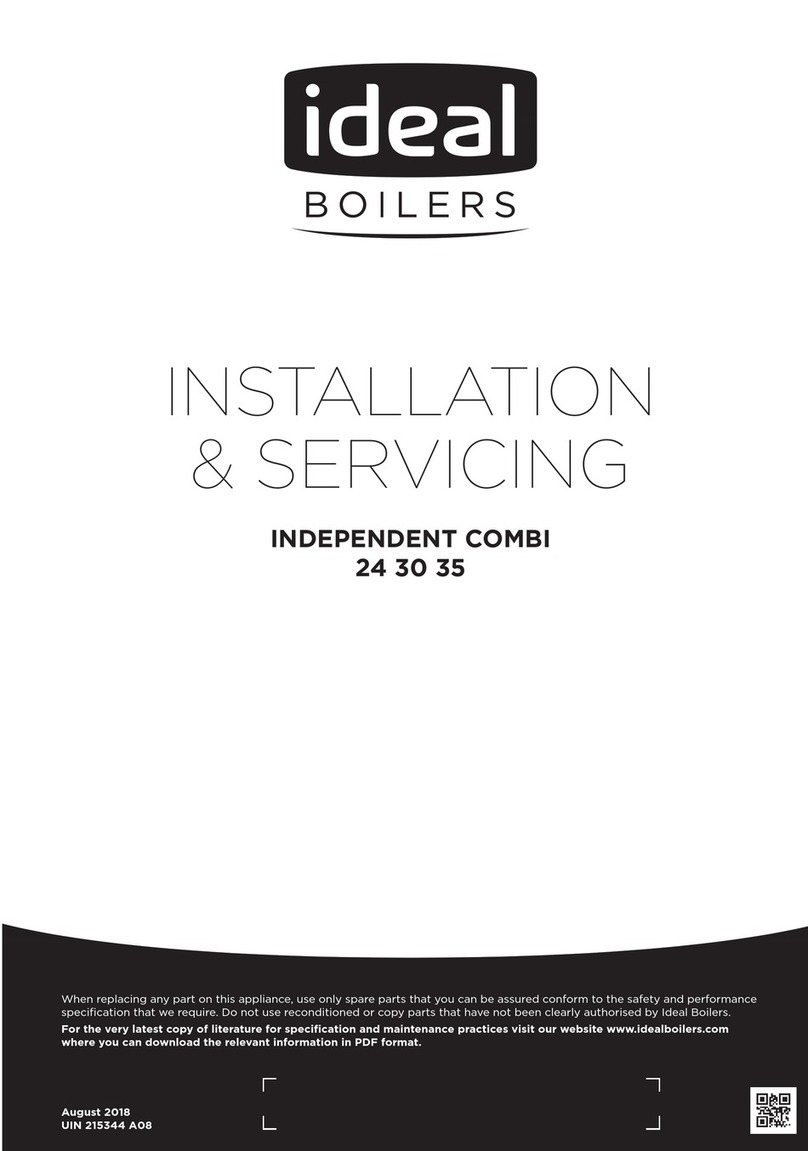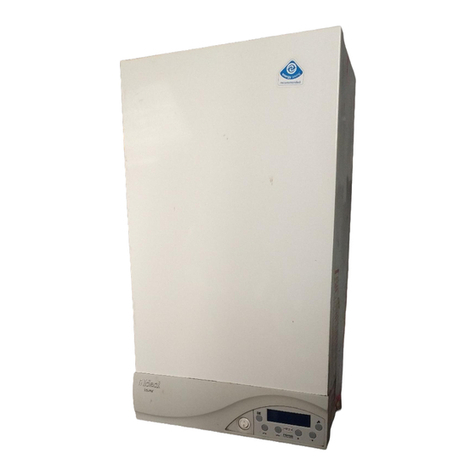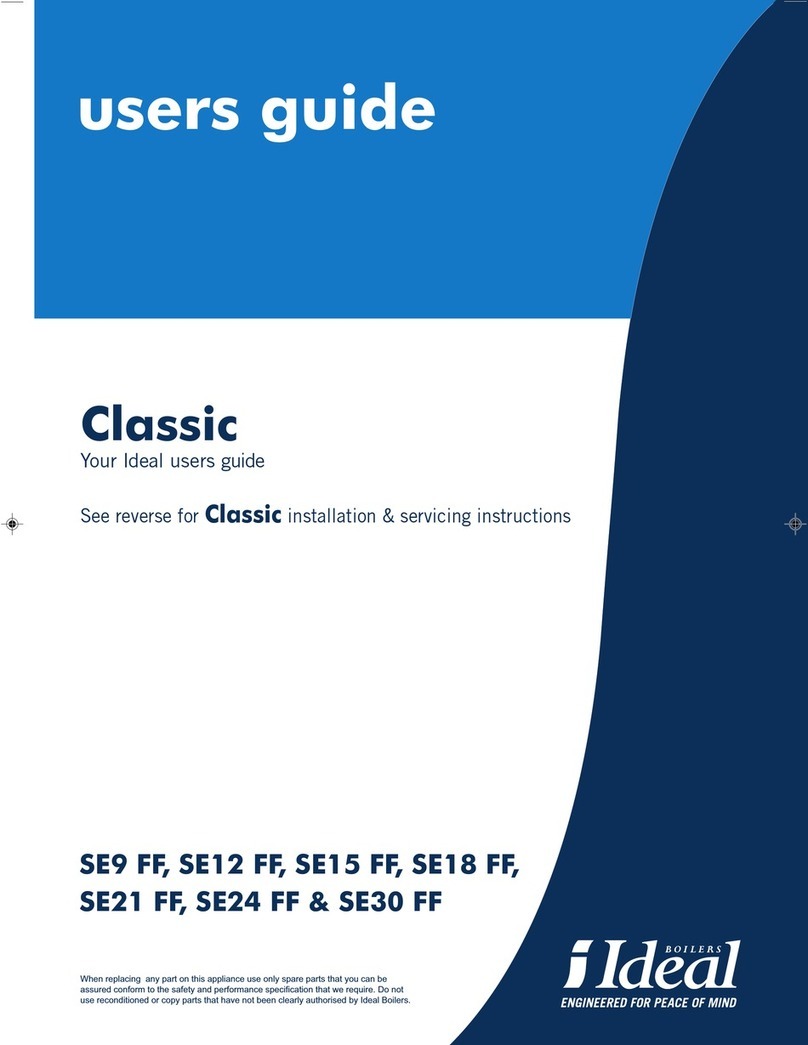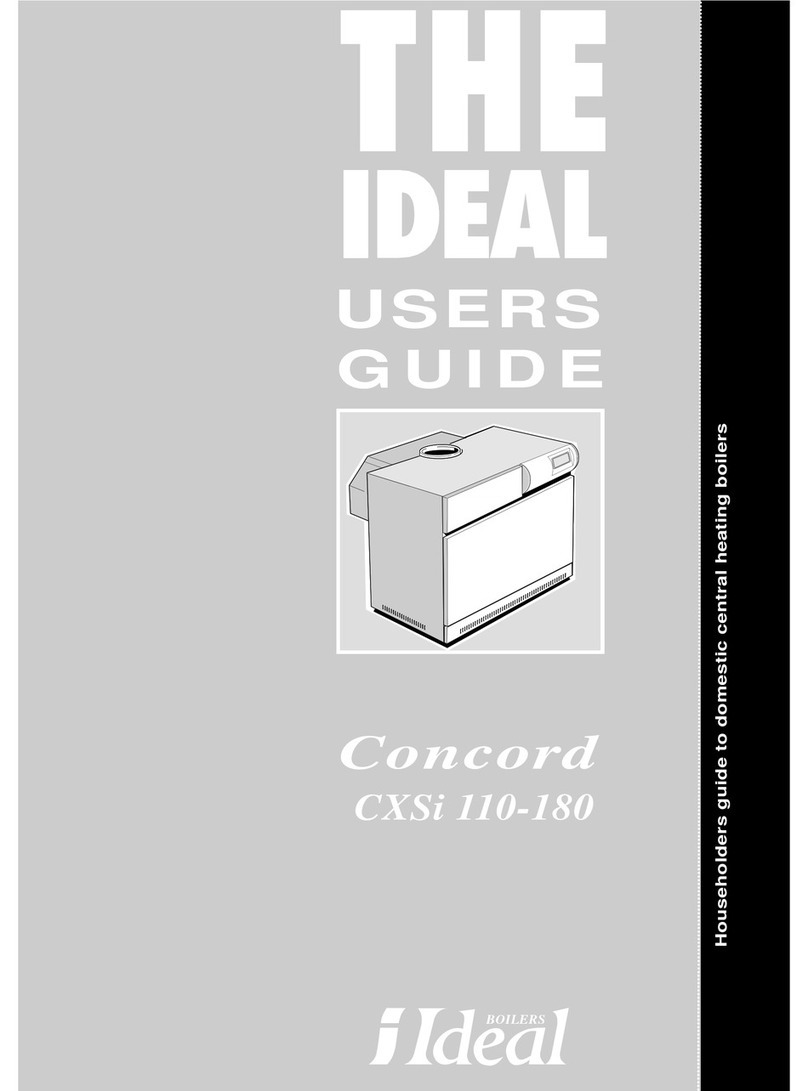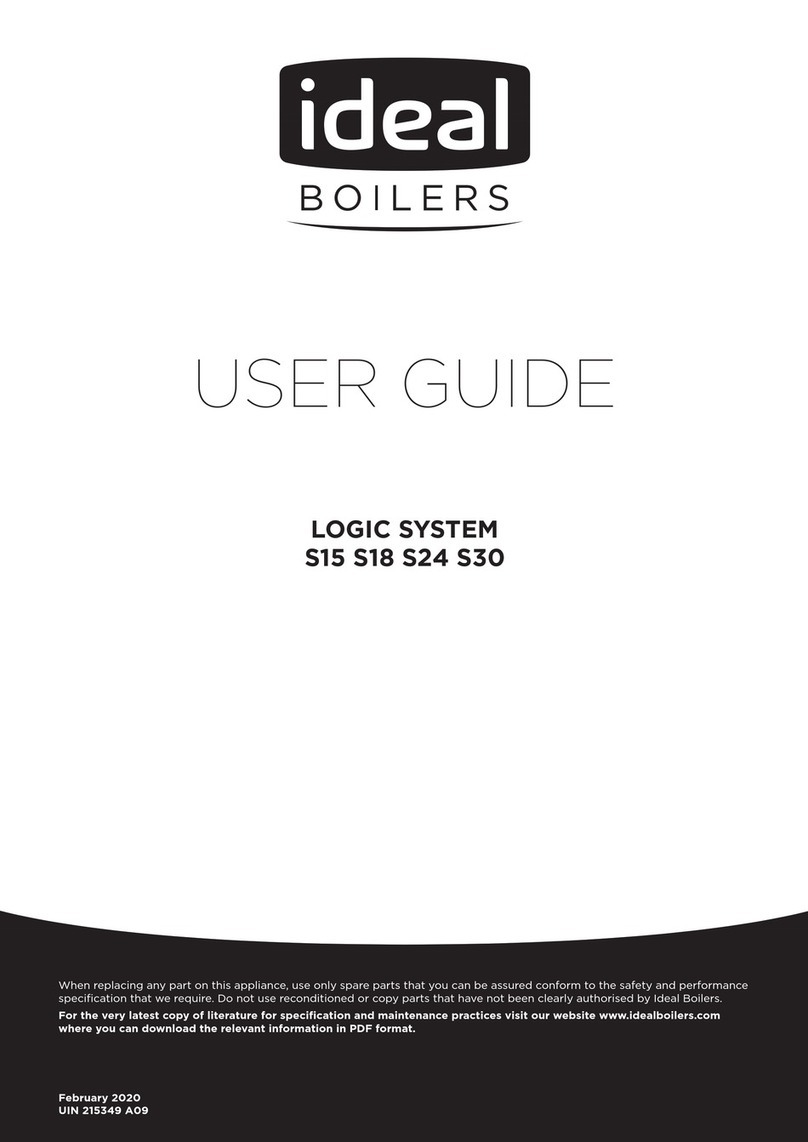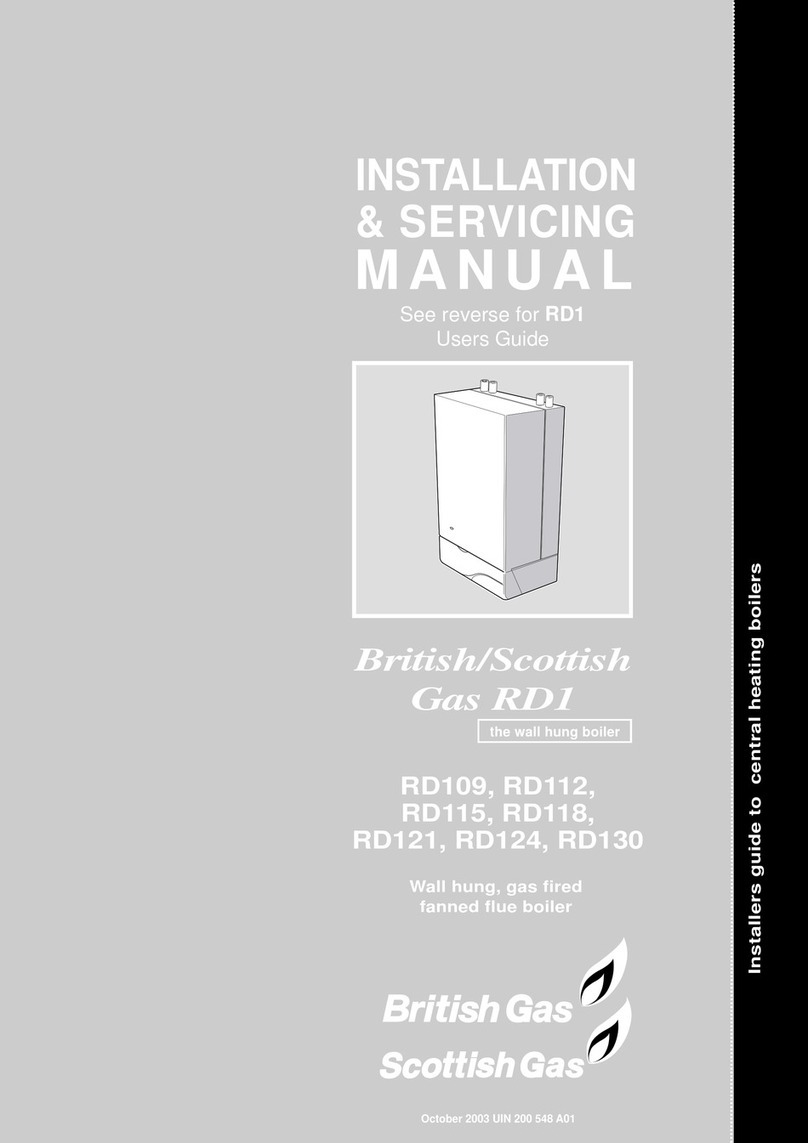7
GENERAL
icos system - Installation and Servicing
3. Minimum acceptable spacing from the terminal to
obstructions and ventilation openings are specified in
Table 3.
4. Where the lowest part of the terminal is fitted less than 2m
(6'6") above a balcony, above ground or above a flat roof to
which people have access then the terminal MUST be
protected by a purpose designed guard.
Terminal guards are available from boiler suppliers.
(ask for TFC flue guard model no. K6 - round, plastic
coated). In case of difficulty contact:
Grasslin (UK) Ltd., Tower House, Vale Rise, Tonbridge,
Kent TN9 1TB
Tel: +44 (0) 1732 359 888. Fax: +44 (0) 1732 354 445
www.tfc-group.co.uk
Ensure that the guard is fitted centrally.
5. The flue assembly shall be so placed or shielded as to
prevent ignition or damage to any art of any building.
6. The air inlet/products outlet duct and the terminal of the
boiler MUST NOT be closer than 25mm (1") to combustible
material. Detailed recommendations on the protection of
combustible material are given in BS.5440-1:2000. In IE
refer to I.S.813:2002.
IMPORTANT. It is absolutely essential to ensure, in practice,
that products of combustion discharging from the terminal
cannot re-enter the building or any other adjacent building
through ventilators, windows, doors, other sources of natural
air infiltration, or forced ventilation / air conditioning.
If this should occur the appliance MUST be turned OFF,
labelled as 'unsafe' until corrective action can be taken.
TERMINAL
The terminal assembly can be adapted to accommodate
various wall thicknesses. Refer to Frame 12.
AIR SUPPLY
It is NOT necessary to have a purpose-provided air vent in the
room or internal space in which the boiler is installed. Neither
is it necessary to ventilate a cupboard or compartment in which
the boiler is installed, due to the low surface temperatures of
the boiler casing during operation; therefore the requirements
of BS.6798, Clause 12, and BS 5440:2 may be disregarded. In
IE the requirements of I.S.813:2002 may be disregarded.
WATER CIRCULATION SYSTEM
IMPORTANT.
A minimum length of 1metre of copper pipe MUST be fitted to
both flow and return connections from the boiler before
connection to any plastic piping.
The central heating system should be in accordance with
BS.6798 and, in addition, for smallbore and microbore
systems, BS.5449.
The hot water storage cylinder MUST be of the indirect type and
should preferably be made of copper.
Single feed, indirect cylinders MUST NOT be used. The
appliances are NOT suitable for gravity central heating nor are
they suitable for the provision of gravity domestic hot water.
The hot water cylinder and ancillary pipework, not forming part
of the useful heating surface, should be lagged to prevent heat
loss and any possible freezing - particularly where pipes run
through roof spaces and ventilated underfloor spaces.
WATER TREATMENT - see Frame 6
GAS SUPPLY
The local gas supplier should be consulted, at the installation
planning stage, in order to establish the availability of an
adequate supply of gas. An existing service pipe must NOT be
used without prior consultation with the local gas supplier.
The boiler MUST be installed on a gas supply with a governed
meter only.
A gas meter can only be connected by the local gas supplier or
by a CORGI registered engineer. In IE by a Competent Person.
An existing meter should be checked, preferably by the gas
supplier, to ensure that the meter is adequate to deal with the
rate of gas supply required.
N.B.The principle of the 1:1 gas valve ensures that the icos
system is able to deliver its full output at inlet pressures
well below those required by BS. 6891.
IMPORTANT.
Installation pipes MUST be fitted in accordance with BS.6891.
In IE refer to I.S.813:2002. Pipework from the meter to the
boiler MUST be of an adequate size, i.e. no longer than 20m
and not less than 15mm O.D.
The complete installation MUST be tested for gas soundness
and purged as described in the above code.
FLUE INSTALLATION
Pluming will occur at the terminal, so where possible, terminal
positions where this could cause a nuisance should be avoided.
The flue must be installed in accordance with the
recommendations of BS.5440-1:2000. In IE refer to
I.S.813:2002.
The following notes are intended for general guidance:
1. The boiler MUST be installed so that the terminal is
exposed to external air.
2. It is important that the position of the terminal allows the
free passage of air across it at all times.
Table 3 - Balanced Flue Terminal Position
Terminal Position
Minimum Spacing
1. Directly below or alongside an
opening window, air brick or other
ventilation opening 300 mm (12")
2. Below guttering, drain pipes or soil
pipes 75 mm ( 3")
3. Below eaves 200 mm ( 8")
4. Below balconies or a car port roof 200 mm ( 8")
5. From vertical drain pipes or soil pipes 150 mm ( 6")
6. From an internal or external corner or
to a boundary alongside the terminal 300 mm ( 12")
7. Above adjacent ground, roof or
balcony level 300 mm (12")
8. From a surface or a boundary
facing the terminal 600 mm (24")
9. From a terminal facing a terminal 1200 mm (48")
10.From an opening in a car port
(e.g. door or window) into dwelling 1200 mm (48")
11. Vertically from a terminal on the
same wall 1500 mm (60")
12.Horizontally from a terminal on the wall 300 mm (12")
